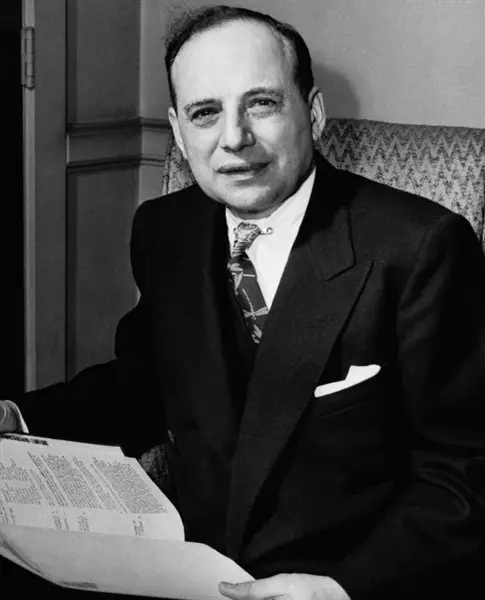Who was Warren Buffett’s investment mentor?
Warren Buffett was not only in a class that Benjamin Graham taught at Columbia Business School, receiving an A+, but also worked for Mr. Graham after graduation. Buffett was so happy to get the job he didn’t know what he would be making until he got his first paycheck. He credits much of his success as an investor to Graham.
Warren Buffett said that “The Intelligent Investor” written by Benjamin Graham was “By far the best book on investing ever written.”
Here’s an Intelligent Investor Summary:
Graham tells his readers to imagine that in the stock market they are buying and selling investments with one person, Mr. Market. This one character represents the stock market and the prices he offers to buy and sell a stock for is based on his manic-depressive nature not the actual value of the company. Graham advises investors to wait to buy when Mr. Market is depressed to get a better value for your money.
Benjamin Graham’s value investing method explains there are two different types of investors: one short-term and another long-term. Short-term buyers and sellers are traders who bet on price movements, while long-term investors focus on owning the underlying company of a stock. He believes investors should think of their self as owners of the business and shouldn’t care about the current stock price if they bought a great company for a good price as the value will be priced into the market over the long-term.
Graham value investing metrics:
Invest in quality, he recommended using Standard & Poor’s quality rating system and required companies to have an S&P earnings and dividend rating of B or better.
Low debt to asset ratio, he recommended investing in companies with total debt to asset ratios of less than 1.10.
Always be aware of the current ratio (current assets divided by current liabilities) to locate stocks with ratios over 1.50.
An investor wants to see positive earnings per share growth for companies. A minimum increase of at least one-third in per-share earnings in the past ten years using three-year averages at the beginning and end.
If an investor can find good companies with P/E (price to earnings per share) ratios of 9.0 or less that is an outstanding value stock. In modern times this level of value is usually found only near the bottom of bear markets and market corrections.
Good companies with P/BV ratios (price to book value) less than 1.20 can be value stocks. P/E ratios can sometimes not tell the whole story of a stocks value. Book value shows the total underlying value of a company’s assets, brands, and intellectual property.
Dividends are a great source of cash flow for an investor and they can be reinvested to buy more equity. High dividend stocks pay the value investor for waiting for price to return to the true company value and can have a compounding growth effect when reinvested.
Benjamin Graham’s margin of safety is the difference between a stock’s price and the underlying company’s intrinsic value for assets and future cash flows. The lower a stock’s price is below the company’s intrinsic fundamental value, the more margin of safety against the stock price falling much lower in the future. In theory, the greater the value of the price of the stock versus the company’s intrinsic value the higher the probability of the stock not going much lower, even during market corrections. An investor has less chance of losing money the better the value the stock is at purchase.
Graham did not believe in the efficient market hypothesis, he believed markets were inefficient due to human emotions. He believed that risk and reward are not always correlated and that an investor can create good asymmetric risk/reward ratios in their favor if they buy good companies at great prices when the odds of them going much lower were very small but their odds of returning to true value was much greater. As an example Graham was looking to by $1 in company value for .50 cents invested in its stock. He wanted to create investment situations where the upside reward was potentially much greater than the downside risk based on fundamental valuation metrics at entry.
“I’d be a bum on the street with a tin cup if the markets were always efficient.” – Warren Buffett
While this book was written in 1949 it is still the standard textbook for the fundamental valuing of a stock in relation to the underlying business.
